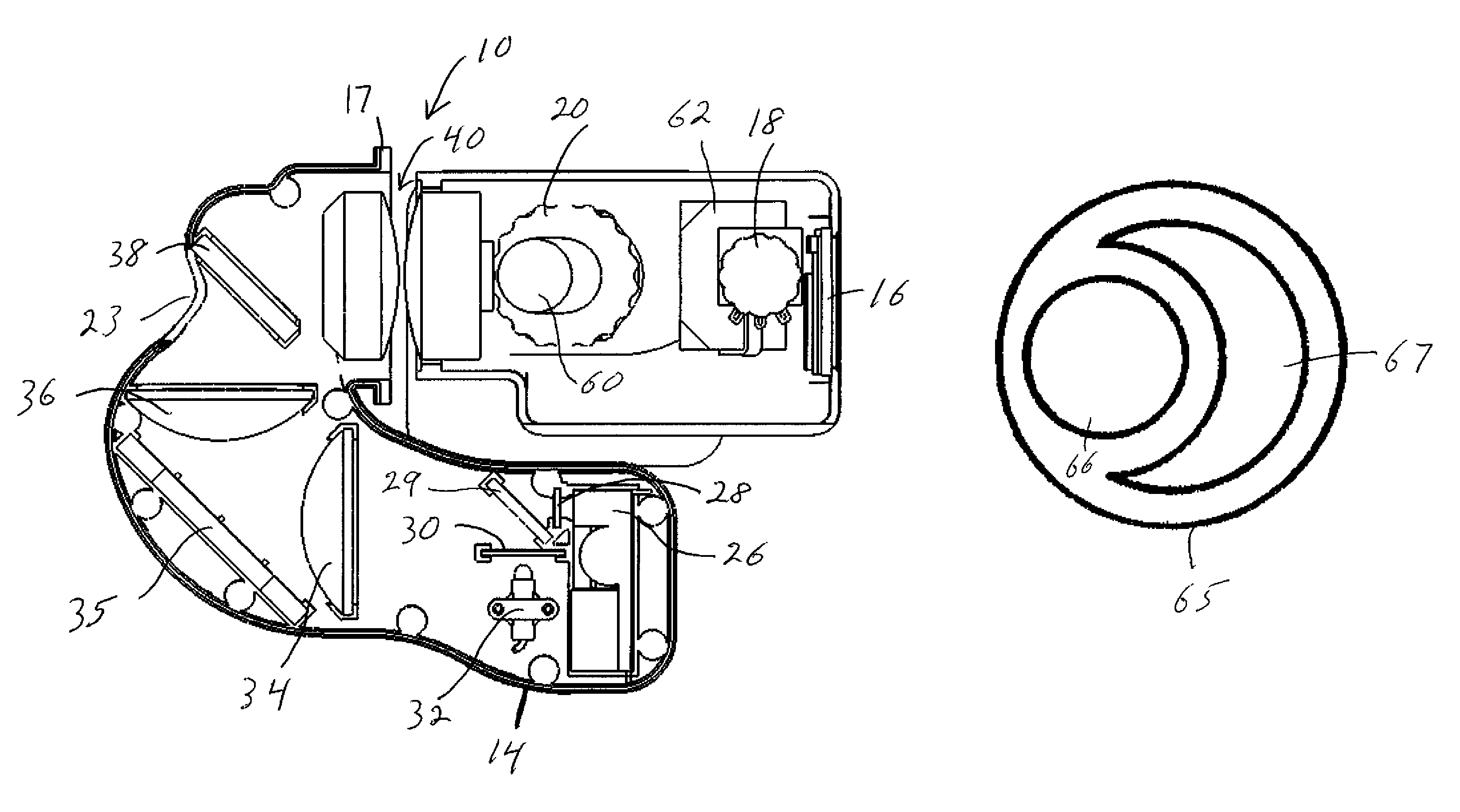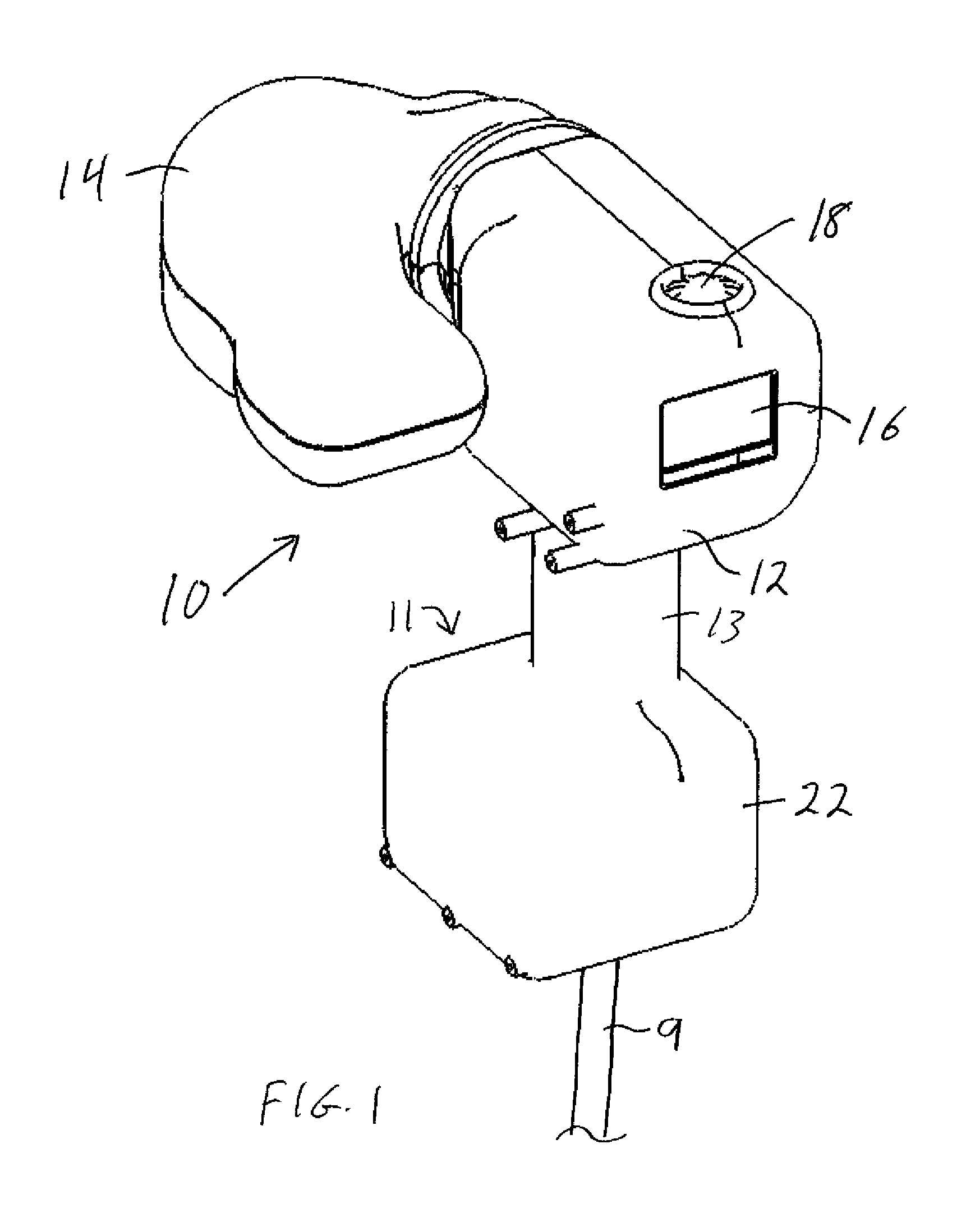Portable Digital Medical Camera for Capturing Images of the Retina or the External Auditory Canal, and Methods of Use
a digital medical camera and camera body technology, applied in the field of digital cameras, can solve the problems of limited electrical distribution and unreliability, and achieve the effects of low cost screening, convenient use and simple devices, and rapid growth of diabetes inciden
- Summary
- Abstract
- Description
- Claims
- Application Information
AI Technical Summary
Benefits of technology
Problems solved by technology
Method used
Image
Examples
Embodiment Construction
[0058]The preferred embodiment of the inventive device, shown in FIGS. 1-7, offers the following features and benefits:[0059]Handheld device for maximum portability.[0060]Overall size of about 7W″×9L″×10H″ (180×230×250 mm).[0061]Overall weight of about 2 lbs (1 kg).[0062]Powered by a rechargeable battery with a small wall charger.[0063]Designed for non-mydriatic use (no pupil dilating drugs required).[0064]40° Field of View.[0065]A near infrared light source used for aiming and focusing. This prevents pupil constriction that is caused by exposure to visible light.[0066]When the user sees that an image is lined up and focused, a trigger is squeezed. This initiates a flash and a white light image is automatically captured.[0067]The captured image is automatically presented on the screen, and then the camera is ready for the next shot.[0068]Zoom and pan features let the user view the image on a small screen to determine whether image quality is acceptable.[0069]Images are stored on rem...
PUM
 Login to View More
Login to View More Abstract
Description
Claims
Application Information
 Login to View More
Login to View More - R&D
- Intellectual Property
- Life Sciences
- Materials
- Tech Scout
- Unparalleled Data Quality
- Higher Quality Content
- 60% Fewer Hallucinations
Browse by: Latest US Patents, China's latest patents, Technical Efficacy Thesaurus, Application Domain, Technology Topic, Popular Technical Reports.
© 2025 PatSnap. All rights reserved.Legal|Privacy policy|Modern Slavery Act Transparency Statement|Sitemap|About US| Contact US: help@patsnap.com



